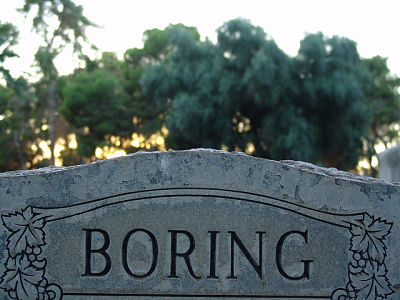Few things are more painful in academic life than sitting through a bad research conference presentation. Typically, you are in a fun place with the opportunity to catch up with friends and colleagues that you haven’t seen in several months. Yet, you find yourself in a windowless section of a hotel ballroom listening to a stupefyingly boring presentation. It isn’t hard to present your work in a clear and engaging way. As we enter conference season, I want to provide a few quick tips to create a great research conference presentation.

There is obviously a great deal of variation in how different disciplines present research at academic conferences. Since my field is education, these tips will be most relevant to others in education as well as probably most social scientists. If you’re in another discipline, my hope is you can take the concepts here and adapt to your specific disciplinary norms.
When preparing your presentation, you want to avoid two things. Having too many slides and too much text on any single slide can ruin your presentation. Focusing on your key points will help you convey your research and keep your audience engaged.
When presenting empirical research, you can use a simple formula to share your work.
1. Introduction (or Context) 1 slide
2. Literature Review and Framework 1 slide
3. Research Questions 1 slide
4. Methodology 1 slide
5. Findings 4-5 slides
6. Implications 1-2 slides
At the most, you shouldn’t have more than one slide per minute you have available to present. Yes, I know many presenters have far more slides than this. But when was the last time you saw a good presentation that stayed within the time limits? The status quo isn’t your friend in this area.
You should also spend the bulk of your presentation time on your findings and implications. Many presenters, especially graduate students, feel the need to spend much of their precious presentation time on reviewing the relevant literature.
Although you want to demonstrate the relevance of your work to others in the field, your audience will be most interested in the findings and implications of your current study. As a result, you should spent approximately 2/3 of your presentation time on these areas.
Another fatal mistake that presenters make is putting too many findings on one slide. This is particularly true for statistical studies that put large tables on a slide that the audience has no hope of reading.
Instead of having to apologize for the font size of your table, fix it before your talk. There are plenty of options to highlight the important points or even pass out copies of your table. It doesn’t help anyone to put a table on the screen that is unreadable.
The same is true for qualitative researchers that put full paragraphs on a slide. If I have to spend 2 minutes reading the slide, I’m not listening to what you’re saying. All you need to provide are short excerpts or key phrases to give the audience a sense of your results.
Academic conferences can be invigorating opportunities to learn about the cutting edge work occurring in your field. Before your next presentation, give your findings the best platform possible. Follow a few of these tips to create a great research conference presentation.

